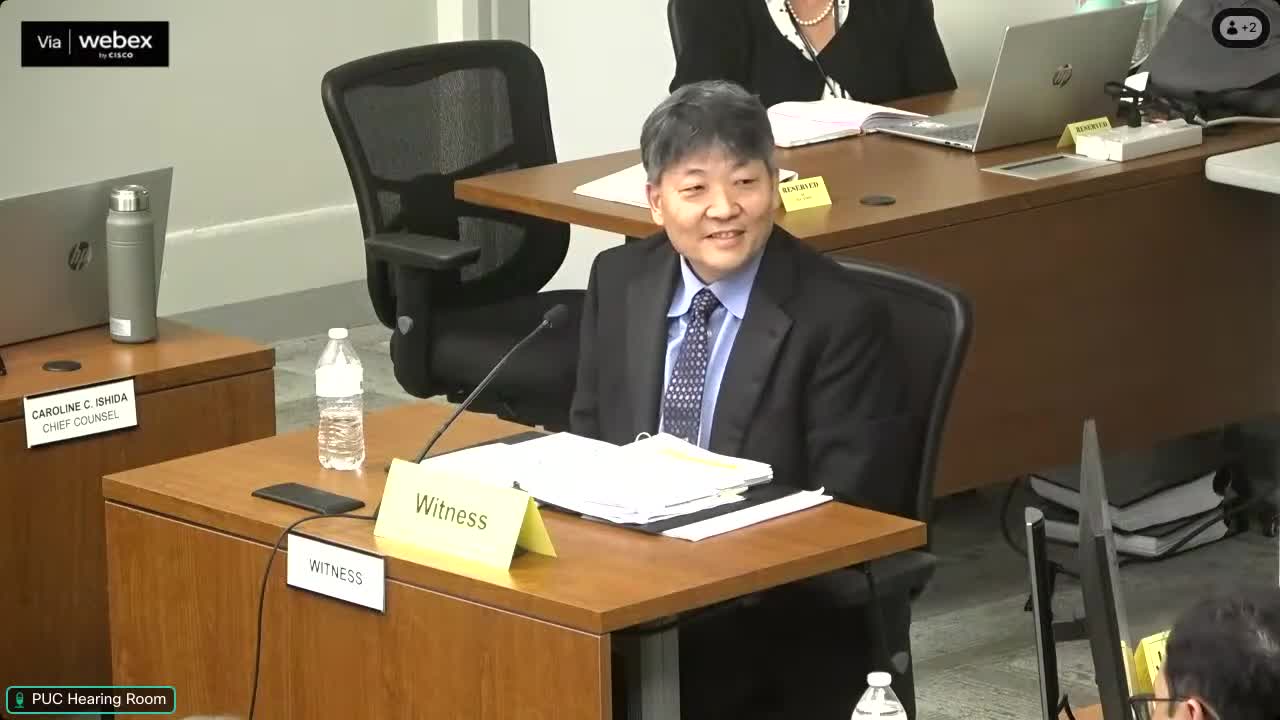Young Brothers Executive Discusses 5-Year Strategic Business Plan and Employee Shipping Discounts
October 01, 2025 | Public Utilities Commission (PUC), Executive , Hawaii
This article was created by AI summarizing key points discussed. AI makes mistakes, so for full details and context, please refer to the video of the full meeting. Please report any errors so we can fix them. Report an error »

In a pivotal session of the Public Utilities Commission in Hawaii, discussions surrounding the Young Brothers' 2025 Rate Case took center stage, shedding light on the intricacies of labor costs and shipping discounts. The meeting, held on October 1, 2025, marked the second day of an evidentiary hearing that could significantly impact the future of shipping rates in the region.
As the meeting unfolded, Mr. Nakagawa, a key witness, was asked to clarify details from a strategic business plan document. The focus was on a table titled "Progress Update April 2024," which highlighted efforts to reduce labor costs through improved operational efficiency. Nakagawa explained that the introduction of the cargo Kaholo system allowed for a more streamlined process, effectively relocating vehicles from flat deck barges and reducing labor hours at ports. This shift, he noted, was part of a broader strategy to contain labor costs, previously referred to as "labor cost containment" but now termed "lead management and containment."
The conversation then pivoted to the concept of "penalty labor hours," which Nakagawa described as hours worked beyond the standard 7.5 hours during weekdays, leading to increased costs for the company. He acknowledged that while he could provide a layman's perspective, a more detailed explanation would be better suited for another witness, Mr. Martin.
The discussion also delved into the implications of gratis in-kind shipping discounts. Nakagawa clarified that these discounts are not charged to ratepayers and are recorded "below the line," meaning they do not factor into regulated revenues. This distinction is crucial, as it indicates that ratepayers are not currently subsidizing these discounts. However, if such discounts were to be included in the tariff, Nakagawa warned that the costs would ultimately be borne by the ratepayers, a shift that could alter the financial landscape for many.
As the hearing progressed, the implications of these discussions became increasingly clear. The decisions made in this case could not only affect the operational efficiency of Young Brothers but also have lasting impacts on shipping rates and the financial responsibilities of consumers in Hawaii. With the complexities of labor costs and shipping discounts at the forefront, stakeholders are left to ponder the potential outcomes of this critical rate case.
As the meeting unfolded, Mr. Nakagawa, a key witness, was asked to clarify details from a strategic business plan document. The focus was on a table titled "Progress Update April 2024," which highlighted efforts to reduce labor costs through improved operational efficiency. Nakagawa explained that the introduction of the cargo Kaholo system allowed for a more streamlined process, effectively relocating vehicles from flat deck barges and reducing labor hours at ports. This shift, he noted, was part of a broader strategy to contain labor costs, previously referred to as "labor cost containment" but now termed "lead management and containment."
The conversation then pivoted to the concept of "penalty labor hours," which Nakagawa described as hours worked beyond the standard 7.5 hours during weekdays, leading to increased costs for the company. He acknowledged that while he could provide a layman's perspective, a more detailed explanation would be better suited for another witness, Mr. Martin.
The discussion also delved into the implications of gratis in-kind shipping discounts. Nakagawa clarified that these discounts are not charged to ratepayers and are recorded "below the line," meaning they do not factor into regulated revenues. This distinction is crucial, as it indicates that ratepayers are not currently subsidizing these discounts. However, if such discounts were to be included in the tariff, Nakagawa warned that the costs would ultimately be borne by the ratepayers, a shift that could alter the financial landscape for many.
As the hearing progressed, the implications of these discussions became increasingly clear. The decisions made in this case could not only affect the operational efficiency of Young Brothers but also have lasting impacts on shipping rates and the financial responsibilities of consumers in Hawaii. With the complexities of labor costs and shipping discounts at the forefront, stakeholders are left to ponder the potential outcomes of this critical rate case.
View full meeting
This article is based on a recent meeting—watch the full video and explore the complete transcript for deeper insights into the discussion.
View full meeting
